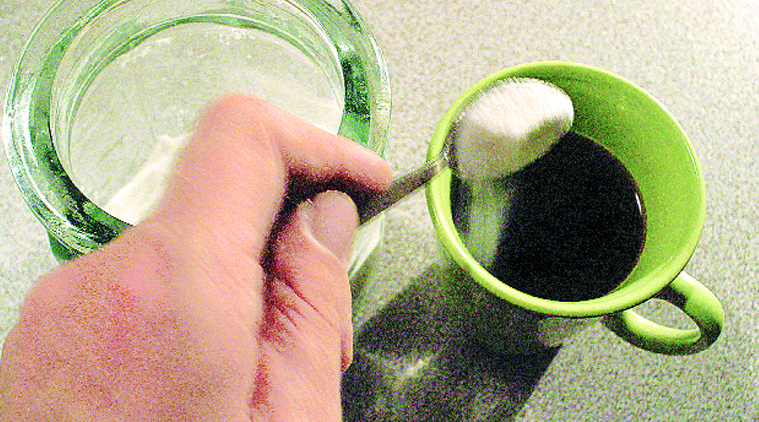- India
- International
Diet diary: Switch to sugar-free
Here are some tips to make your transition to a sugar-free diet easier.
 Sugars can be used in moderation by most healthy active people but must be used sparingly by weight watchers.
Sugars can be used in moderation by most healthy active people but must be used sparingly by weight watchers.
I am often asked if consuming a certain amount of sugar is essential in our diet. During digestion in the body, all carbohydrates including starches like cereals — bread, roti, rice, pulses, dals, fruits and potatoes breakdown into sugars. The body uses these sugars for energy.
Sugars can be used in moderation by most healthy active people but must be used sparingly by weight watchers, those with abdominal obesity, diabetes, dyslipidemia (abnormal cholesterol levels) and inactive people.
So if you decide to eat a sugar-free diet, whether due to medical reasons or personal preferences, you need to get ‘sugar-wise’. Don’t get fooled by taste or appearances and claims on food labels. There is plenty of sugar in disguise which you may not account for. Here are some tips to make your transition to a sugar-free diet easier:
Tip 1: Cut back slowly on your sugar consumption. If you currently eat a lot of sugar, it can be hard to stop eating it all of a sudden. So, step down your sugar consumption slowly over a few weeks.
Tip 2: Learn how to decode the word ‘sugar’. Just because something is labeled as sugar-free does not mean that it does not have some form of sugar in it. The following terms are all words to describe various forms of sugar: honey, jaggery, molasses, barley malt, brown sugar, cane sugar, corn sweetener, corn or agave syrup,sucrose, lactose, fructose, glucose, dextrose, maltose, galactose, grape sugar, mannitol, sorghum syrup and maple syrup.

Tip 3: Watch what you drink, not just what you eat. Drinks, even those that sound healthy like fruit juices, are often loaded with sugar. Most people know to avoid soft drinks, but you should be mindful of the amount of sugar in your tea, coffee, shakes and juices as well. Sugar can be found even in “diet” drinks and some kinds of flavored waters. Sweetened wines, beer, liquors and mixed alcoholic drinks add to sugar calories indirectly as well.
Tip 4: Make your own foods. Processed foods contain preservatives and massive amounts of sugar to prolong the shelf life and better taste. Buying fresh ingredients to prepare snacks and meals does not take that much more time and it is typically a lot healthier.
Tip 5: Limit refined carbohydrates. Carbohydrate rich foods like white breads, pastas, and so forth might not taste sweet, but they are forms of sugar. Choose healthy carbohydrates like whole grains and pulses rich in fiber.
Tip 6: Nourish your body adequately. Sugar cravings can often result as a consequence of missing nutrients. These include proteins, good fats, B-vitamins, magnesium, chromium and zinc.
Tip 7: ‘Sugar free’ fixes include mouth fresheners like fennel, cardamom, tea, coffee and sugar free sweets and gums.
Tip 8: Talk to your doctor — If you are diabetic or have another medical reason for wanting to cut the sugar, you should not suddenly switch to a drastic diet to avoid all sugars. Your doctor or a professional nutritionist can help you come up with a great sugar free plan that will fit your lifestyle.
Apr 26: Latest News
- 01
- 02
- 03
- 04
- 05




































